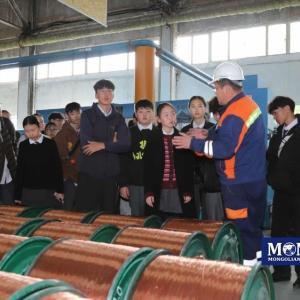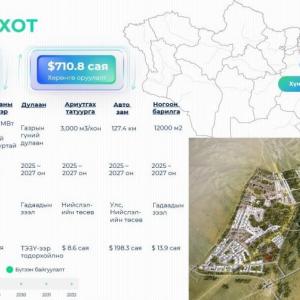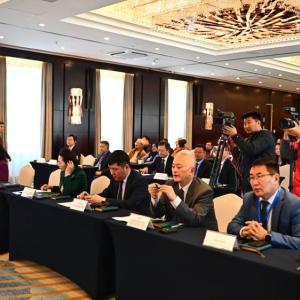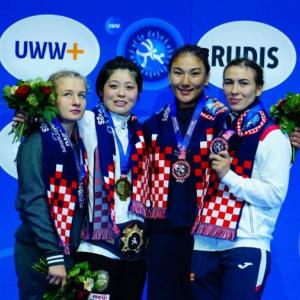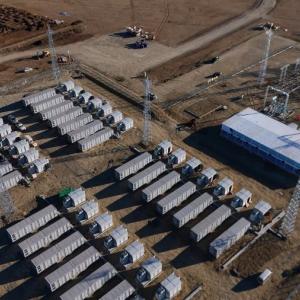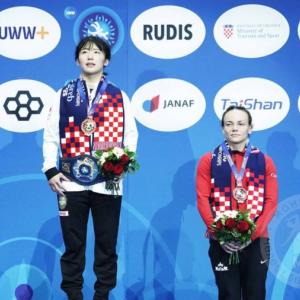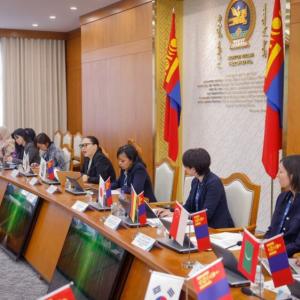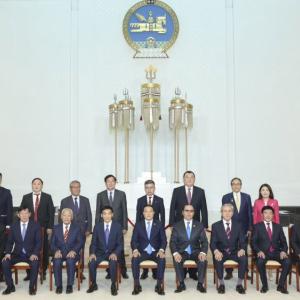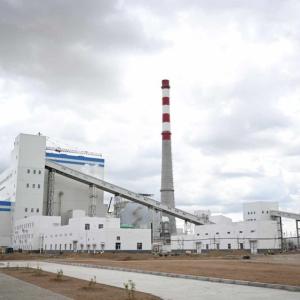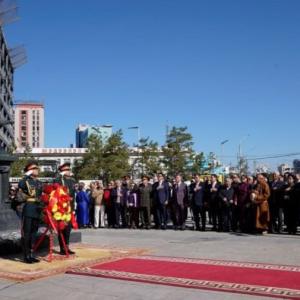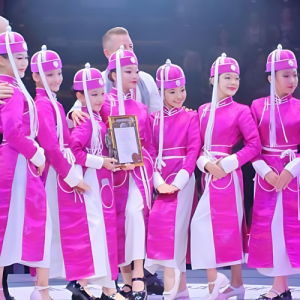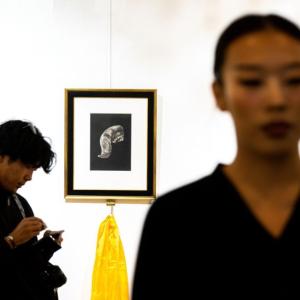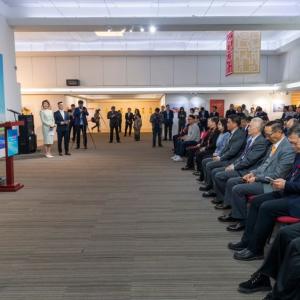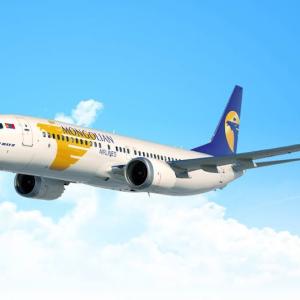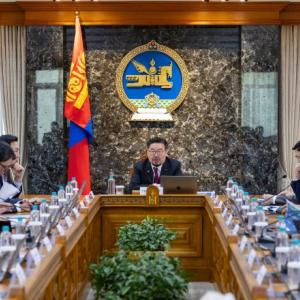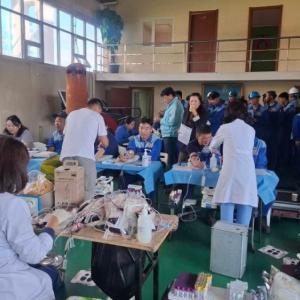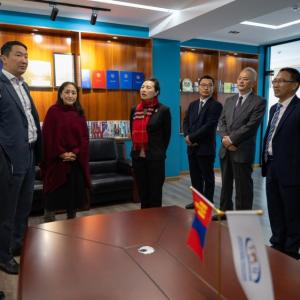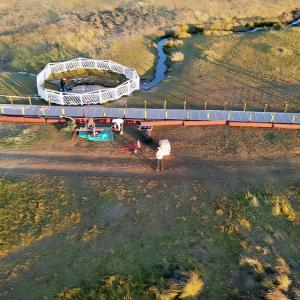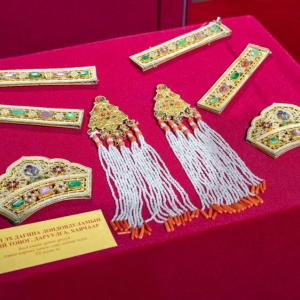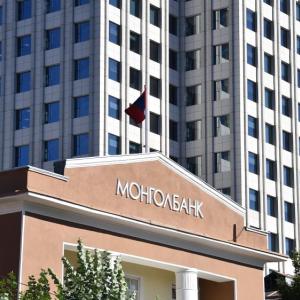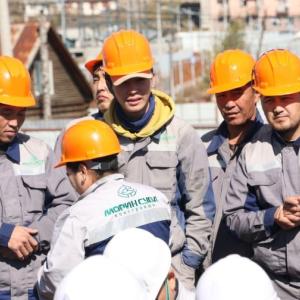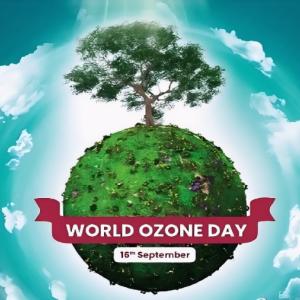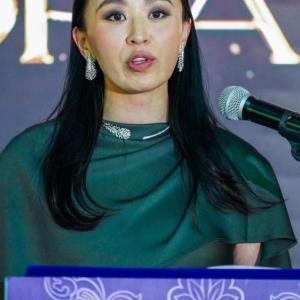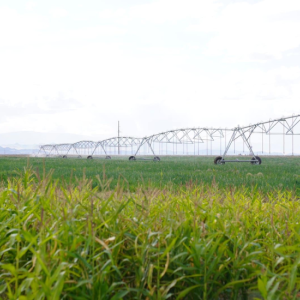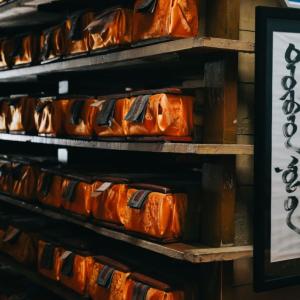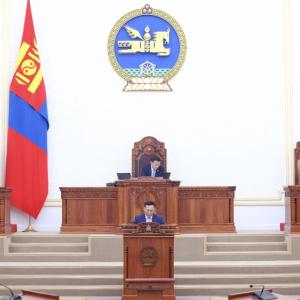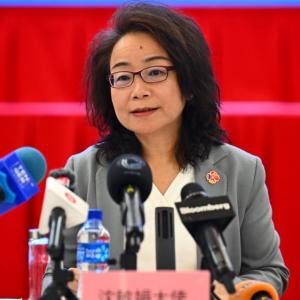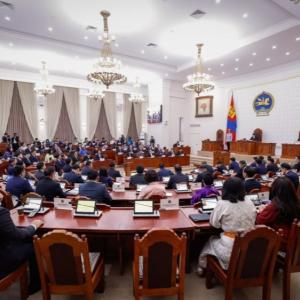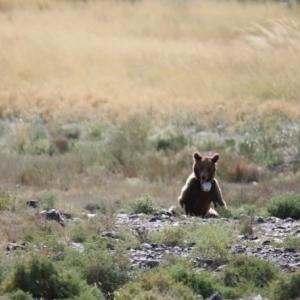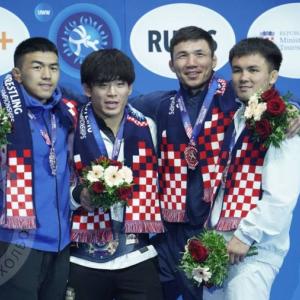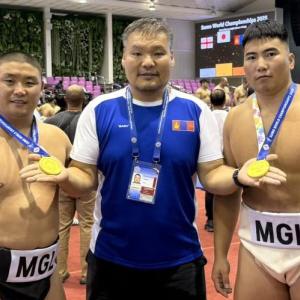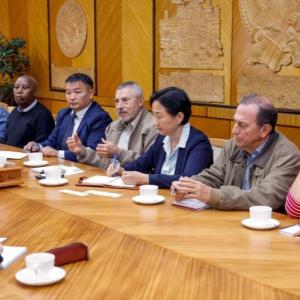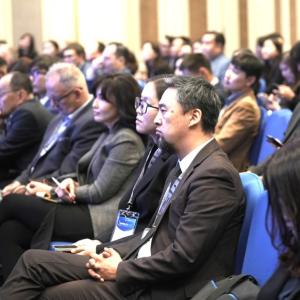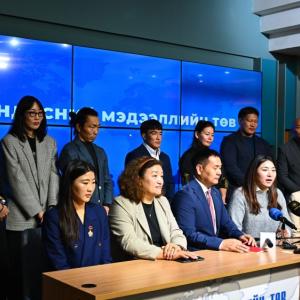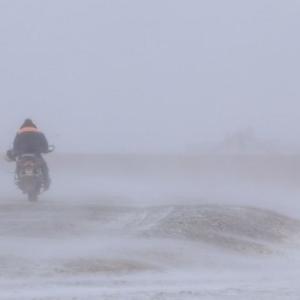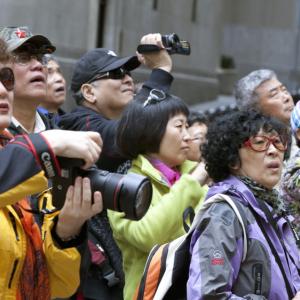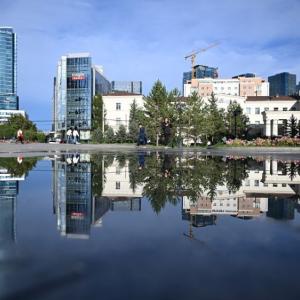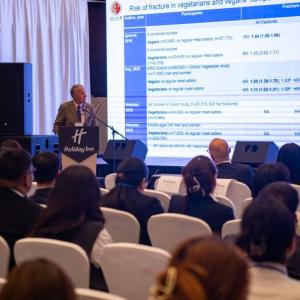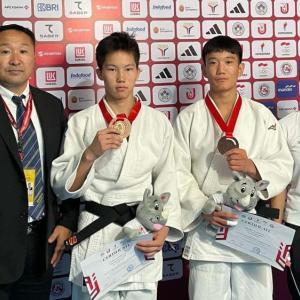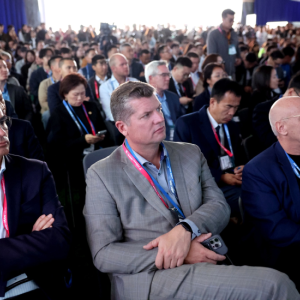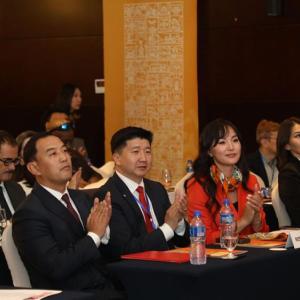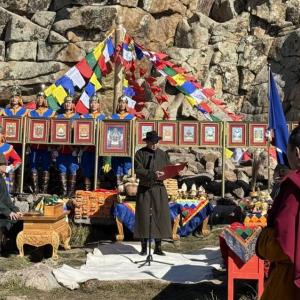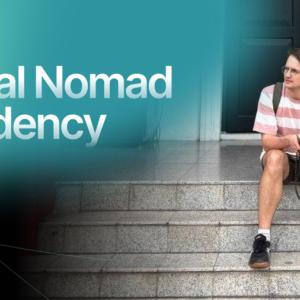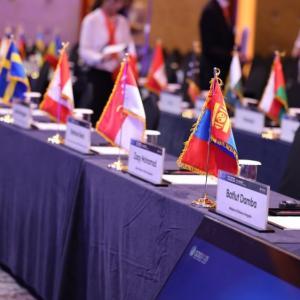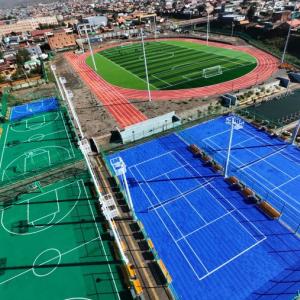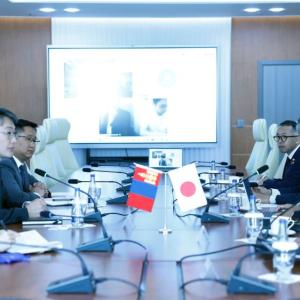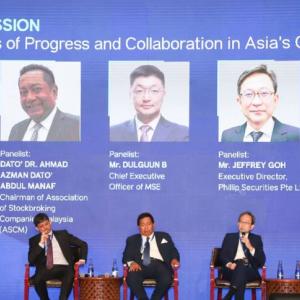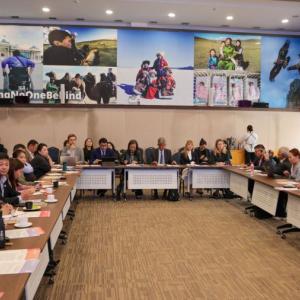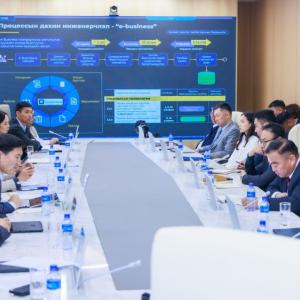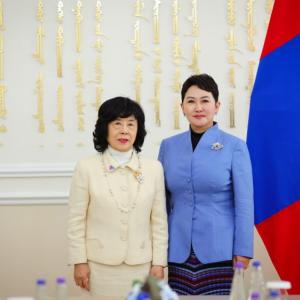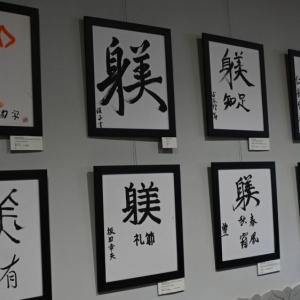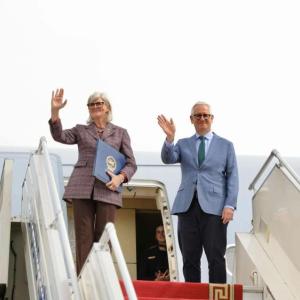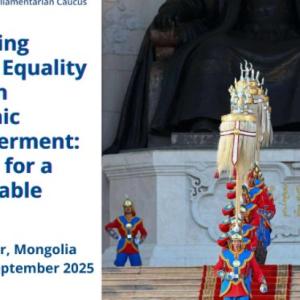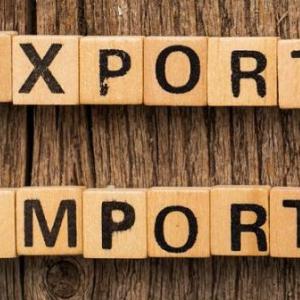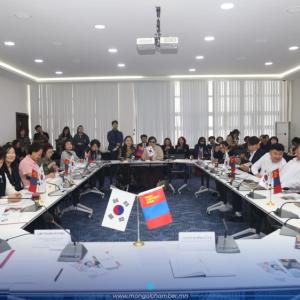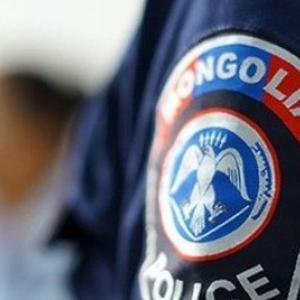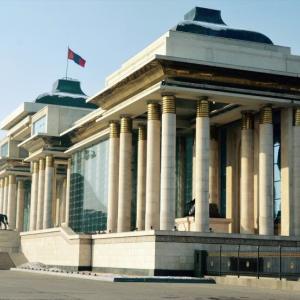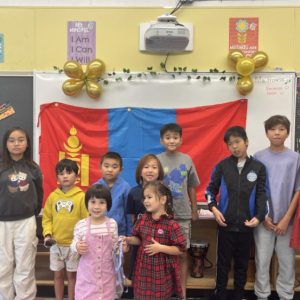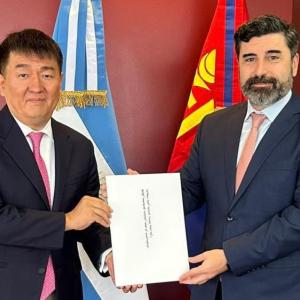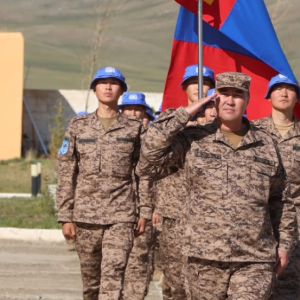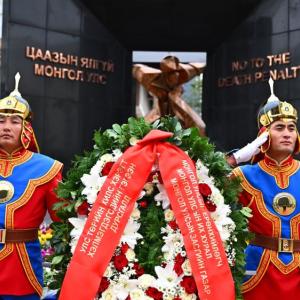Michal Lukeš: The National Museum of the Czech Republic Has More Than 2,500 Exhibits Related to Mongolia
Society
Ulaanbaatar, October 23, 2023 /MONTSAME/. On August 9-15, 2023, the Director General of the National Museum, Dr. Michal Lukeš, undertook a working visit to Ulaanbaatar and gave a speech at the 12th International Congress of Mongolian Scientists. He also met with the authorities of the Ministry of Culture, the Academy of Sciences, the Institute of Paleontology of the Academy of Sciences, and the Genghis Khan Museum. The sides agreed to strengthen further cooperation and exchanged ideas on the implementation of potential projects. Dr. Michal Lukeš is a historian, who specializes in history of the 20th century Europe, and he has been working as the Director General of the National Museum for 21 years. The National Museum of the Czech Republic was founded in 1818. As one of the largest European museums operating in the field of museum, academic, and research, the National Museum collections currently number more than 20,000,000 items, which makes up one-third of all museum collections in the Czech Republic.
-I’m very glad to see you here and thank you for accepting our invitation to give an interview.
-Thank you for inviting me to the interview.
-Mongolia and the Czech Republic have been maintaining mutual cooperation since the 1950s. Currently, this cooperation has strengthened in all areas. In this context, you are undertaking a working visit to Mongolia. What was the purpose of your visit this time? What did you achieve during your stay in Mongolia?
-The Czech Republic and Mongolia have long-lasting diplomatic relations. When we look at the history of our relationship, 73 years have passed since the Czech Republic and Mongolia established diplomatic relations. In 1953, 70 years ago, the first Czechoslovak ambassador arrived in Ulaanbaatar. Political, economic, scientific, and cultural ties between our countries have been developing since the 1950s. By then, thousands of Mongolians have got their education in former Czechoslovakia. Hundreds of workers from Czechoslovakia worked in Mongolia as archeologists geologists, and other professionals. Relations weakened temporarily in the late 1980s and early 1990s. Recent years have seen a revival of the broader relationship. In this context, our Czech National Museum is also working to take its relations with Mongolia to a new level.
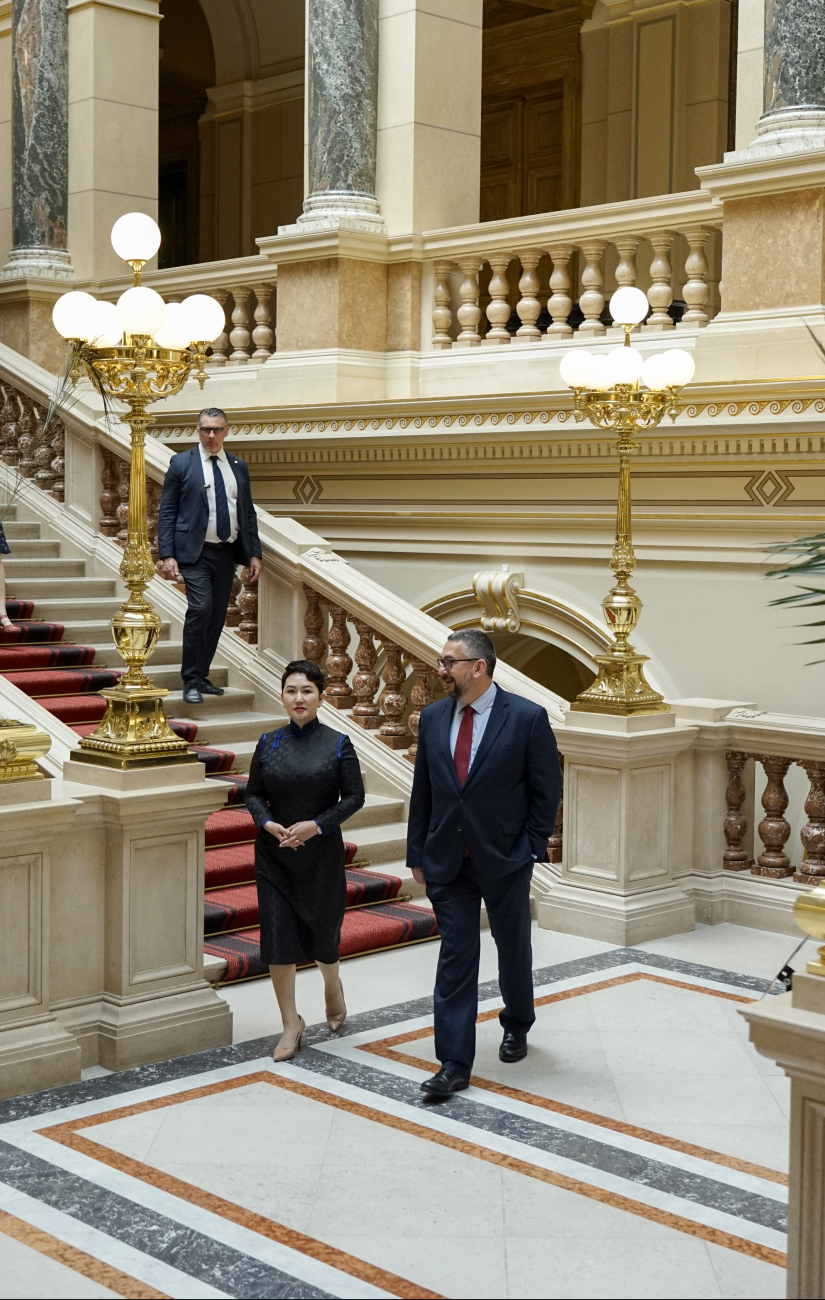
Mongolian Foreign Minister
Battsetseg Batmunkh Visits National Museum of the Czech Republic
In May 2023, when the Minister of Foreign Affairs of Mongolia B. Battsetseg visited the Czech Republic, she visited our museum, discussed with us future cooperation between the two sides and it was decided to organize certain events in this context. Also in May, the President of the Mongolian Academy of Sciences, Dr. D. Regdel, worked in the Czech Republic, and we signed a Memorandum of Cooperation between the Czech National Museum and the Mongolian Academy of Sciences. This time I worked in Mongolia to meet and talk with relevant officials from the Mongolian side about the work that I started and talked about, as well as to participate in the International Congress of Mongolists in Ulaanbaatar and make a presentation on cultural cooperation between the Czech Republic and Mongolia. Although my work visit was short-lived, I plan to return with a lot of work done. In particular, I met with the Minister of Culture of Mongolia Ch. Nomin, the President of the Mongolian Academy of Sciences Dr. D. Regdel, the Director of the Institute of Paleontology of the Academy of Sciences Dr. Kh. Tsogtbaatar, the Director of the Chinggis Khaan National Museum Dr. S. Chuluun and we discussed future cooperation. By the way, we are glad that our friends from the Mongolian side greeted us warmly and we discussed specific proposals for cooperation.

-Within the framework of the MOU between the National Museum of the Czech Republic and the Mongolian Academy of Sciences, how bilateral relations will continue, and what tasks will be carried out?
-The MOU, signed between the National Museum of the Czech Republic and the Mongolian Academy of Sciences, facilitates cooperation in many areas including cooperation in the field of science, experience exchange, conducting joint studies and research, and organizing exhibitions. I met Dr. D. Regdel, the President of the Mongolian Academy of Sciences, and Dr. Kh. Tsogtbaatar, the Director of the Institute of Paleontology of the Academy of Sciences, to discuss the possibility of stage-by-stage implementation of tasks included in the Memorandum. In principle, some concrete decisions have been made. For example, we plan for 2025-2026 a project with the Academy of Sciences of Mongolia on “The Mysteries of Mongolian Dinosaurs”. I am sure that this Exhibition will be one of the most interesting exhibitions not only in the Czech Republic, but also in Europe. Many tourists will come to the Czech Republic to see it. We once again discussed details of how the Exhibition should be held and agreed on the timing.
-How is the National Museum of the Czech Republic going to cooperate with the Chinggis Khaan National Museum?
-We met authorities of the Chinggis Khaan National Museum and discussed further cooperation. On our part, in October 2023, the Director of the Museum, Dr. S. Chuluun, was invited to the Czech Republic. During his visit, further cooperation will be discussed in detail. During the time I was visiting Mongolia, we were able to discuss concrete tasks including the opening of the Chinggis Khaan Exhibition in the Czech Republic and the publication of an illustrated catalog describing the cultural heritage related to Mongolian history, culture, and customs preserved in our country. In 2023-2024 the Chinggis Khaan Exhibition will be opened in France. We assume that the Exhibition may be transferred to the Czech Republic in 2024. The final decision will be made soon. In fact, we have a lot to learn about how the Chinggis Khaan National Museum functions today. In a very short time, its facilities were constructed according to the standards of contemporary museums. Although our museum has a history of more than 200 years, the Chinggis Khaan National Museum hosts many events to share experiences in the field of new technologies, education, learning experiences, and ways to increase audiences. Our priority goal is a successful opening of the exhibitions mentioned above. I should repeat that I think that the joint exhibitions “The Mystery of the Mongolian Dinosaurs” and “Chinggis Khaan” will be very interesting not only to the Czechs, but also to random visitors as well.
-It is expected that bilateral cooperation between the two countries will be enhanced to a new level. The tasks that were set in May are in the process of completion. Could you tell us more about them?
-As for me, last spring I met Mongolians for the first time to discuss cooperation. I met B. Battsetseg, Minister of Foreign Affairs, and authorities from the Mongolian Academy of Sciences. We invited the latter to the Czech Republic to sign the MOU and they invited me back to Mongolia. Today I came to Mongolia to agree on several cooperation projects. Despite our cooperation has continued for 4-5 months, the results of our mutual tasks were high. That is why we believe that our scheduled events will continue to run smoothly. Also, I assume there will probably be a lot of new tasks ahead. Besides bilateral cooperation with the Chinggis Khaan National Museum and the Mongolian Academy of Sciences, the National Museum of the Czech Republic is interested in expanding cooperation and is open to establishing relations with other museums and organizations in Mongolia. We will continuously strengthen our cooperation and I am looking forward to a productive cooperation in a near future. The Czech Republic is interested in deepening cooperation with Mongolia. The Mongolian side is aware of this and accepts it with dignity and properly. That is why I think that I will come to Mongolia more than once. The paleontological expedition from our Museum has already arrived in Mongolia and left to the Gobi to conduct research. I hope I will have an opportunity to join them later. In Europe, Mongolia is called “Little North America”. I wish my traveling in Mongolia would not be restricted to only one destination. Therefore, I should see landscapes including forests, mountains, rivers, and lakes.
-Events should not be restricted to exhibitions about Mongolia in the Czech Republic, the Czech side can hold an exhibition in our country as well. What exhibitions are you planning to organize in Mongolia?
-The Czech side offers a
number of exhibitions. However, first of all, we ought to take into account the
interests of the Mongolian side. Therefore, what Mongolians are interested in
is the most important. For example, from the Czech side we can offer:
1. Czech castles
2. Famous Czech composers
3. An exhibition of Czech garnets can be held in Mongolia. It is planned that the exhibition will be held according to mutual agreement from both sides.

-During your visit to
Mongolia, you took part in the International Congress of Mongolists and made a
presentation. Can you tell us more about your presentation?
-Yes, I did. I participated in the International Congress of Mongolists with a talk on Czech-Mongolian cultural relations. My presentation consisted of four parts. First, I talked about the history of cultural relations between the two countries. Second, the Czech National Museum was presented. The National Museum of the Czech Republic is one of the oldest scientific and museum institutions in the Czech Republic. Founded in 1818, it celebrated the 205th anniversary of its foundation and is, nowadays, the central and largest Czech state museum. Its collections currently number more than 20,000,000 items. The National Museum includes five institutes: the Historical Museum; the Museum of Natural History; the Czech Museum of Music; the National Museum Library and the Náprstek Museum of Asian, African, and American Cultures. In my presentation, I talked about the library, laboratories engaged in various research activities, the museums, and that we support research and teaching activities. Third, I presented significant exhibits related to Mongolia from the collection of the National Museum of the Czech Republic. Four, I mentioned the willingness of the National Museum to support further cooperation with Mongolia. In the Náprstek Museum, which has exhibits related to Asian, African, and American cultures, there are over 2,500 exhibits related to Mongolia. We have collected them since the 20th century, more precisely, since the 1950s. The Czechs who worked in Mongolia at that time brought many exhibits from Mongolia. Half of those exhibits are related to religion and half to the everyday routine of Mongolians. Currently, a book is ready for printing which is entitled “Tibet and Mongolia” by Helena Heroldová.
-When did the history of Mongolian-Czech cultural relations begin? Did it start in the 20th century? Were there any traces of cultural contact before this?
-The first recorded relationship between our countries began between the 19th and 20th centuries. In the 1890s, Hans Leder travelled around Mongolia at the turn of the 19th and 20th centuries. Almost forgotten today, he was one of the great travelers of his time, though. In the 1890s, he made it as far as Mongolia, today’s Ulaanbaatar, and returned to Mongolia repeatedly. During his travels, he gathered a collection of around 4,000 items. He was the 4th foreign ambassador to Mongolia. That’s why the number of diplomat plates of the Czech Embassy is still 04. The main cooperation between our countries took place within the framework of the Council for Mutual Economic Assistance. This has opened the door for cooperation in many areas. For instance, geologists from the Czech Republic were allowed to conduct a number of geological research and collect samples in Mongolia. Also, joint archeological research were conducted. There are numerous photographs at that time. In the late 1950s and 1960s, Mongolians began to study en masse in the Czech Republic which sat the core of cultural communication. Subsequently, Mongolian studies developed at the Charles University in the Czech Republic. Even now, the University has a department of Mongolian language studies and Mongol studies and still trains Mongolists. Although the Czech Republic is not big, the Mongol Studies Department is amongst the top 10 in the world. Therefore, as the cultural relations between Mongolia and the Czech Republic have a long history, I think it will continue in the future. Currently, more than 10,000 Mongolians live and work in the Czech Republic. Our country has become the country with the largest number of Mongolians on the European continent and the 3rd country in the world with the largest number of Mongolians who live there. Although our countries are geographically distant, we have a long history of relations.
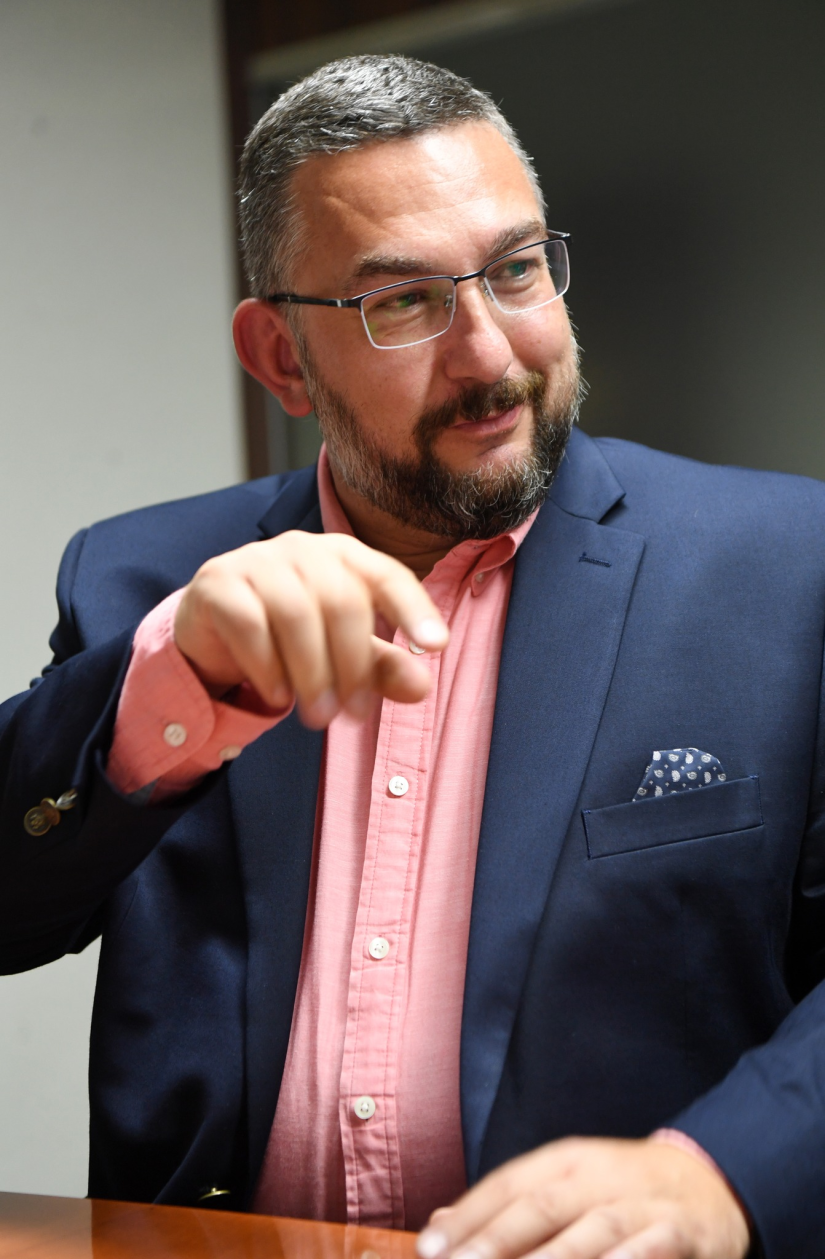
-You said that the Náprstek Museum has over 2,500 exhibits related to Mongolia. It would be interesting to hear about them.
-From Hans Leder’s collection, only four paintings and a few clay offerings survived, which are part of the collection of the Náprstek Museum and belong amongst important items. Mongolian traces are also present in the Czech Museum of Music collections. For example, there are historical sound carriers from the late 1940s and 1950s: gramophone records containing Mongolian folk music. The core consists of rare recordings of Mongolian performers and musical ensembles recorded during the 1st World Youth and Student Festival held in Prague in 1947. Also in the 1950s, Lumir Jisl, one of the main figures in Czech-Mongolian studies, came to Mongolia, conducted archaeological research, and took many interesting photographs. The Náprstek Museum acquired many objects directly from Lumír Jisl and subsequently from his family. His collection is interesting in its attempt to capture the everyday life of Mongolian herders. It includes a lot of small herding and agricultural implements. Linguist Pavel Poucha was another Czech scientist whose collection significantly enriched the collection of the Náprstek Museum. Items from Pavel Poucha’s inheritance were brought to the Náprstek Museum only in 2004, thanks to his family. It consisted of approximately one hundred and fifty objects, often fragments of religious items or clothing, women’s ornaments, and everyday objects. I consider it interesting that one of the most remarkable items in the Náprstek Museum, a Mongolian woman shaman’s robe, was brought to Czechoslovakia by the famous Slovak writer Dominik Tatarka in 1954. The Náprstek Museum acquired other objects in various ways from the collections of Czech workers based in Mongolia. Today, religious objects constitute about half of the col lection. There are mainly fragments of Buddhist sculptures, altars, and architectural elements of temples. Other religious items include ritual utensils – bells, thunderbolts, offering bowls and lamps, and water vases. We don't just collect these exhibits and store them, we show our collection to the public. Two exhibitions took place in 2020.
 Mongolian Tsam Mask on Display
at the National Museum of the Czech Republic
Mongolian Tsam Mask on Display
at the National Museum of the Czech Republic

 Ulaanbaatar
Ulaanbaatar
